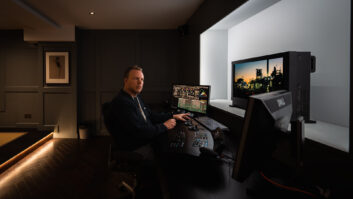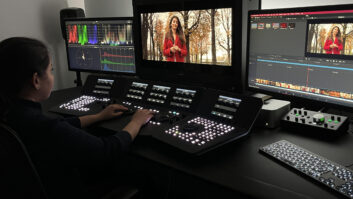Recent times have seen an eruption of activity as post production houses prepare to meet the Digital Cinema Initiatives requirements, writes Carolyn Giardina. And the initiatives have also prompted a new dialogue about the colour space among post production technology manufacturers.
It was only a short while ago that Digital Cinema Initiatives (DCI) – a consortium made up of studios Disney, Fox, MGM, Paramount, Sony, Universal, and Warner Bros. – released its Digital Cinema specification, a set of recommended guidelines for the digital projection of motion pictures, designed to help theatrical projector and equipment manufacturers create uniform and compatible digital cinema systems, writes Carolyn Giardina.
Since then, the industry has continued to move toward fulfilling the promise of Digital Cinema. And Hollywood studios are already beginning to ask for digital cinema deliverables with the characteristics outlined in the DCI specification.
“Digital Cinema is here; it’s going to happen,” asserted the US National Association of Theater Owners president John Fithian last month during the SMPTE Technical Conference in New York. “We are very confident that the spec is on course toward standardisation.”
The post production portion of the DCI specification (which can be downloaded in its entirety at www.dcimovies.com) essentially directs that after a master is completed, there would be the creation of what DCI calls a Digital Cinema Distribution Master (DCDM) and Digital Cinema Package (DCP).
A DCDM is defined as a collection of uncompressed files of a movie with characteristics including an X’Y’Z’ color space, as well as image resolution that is either 2k (2048 pixels of horizontal resolution x1080 vertical) or 4k (4096 x 2160). Creation of a DCP from the DCDM involves encoding the feature using a JPEG 2000 compression scheme, encrypting it for security and packaging it for distribution.
Among the most discussed points in post circles is the call for X’Y’Z’ colour space. “It’s a challenge because [most] colour correction systems today do not support that colour space,” says Texas Instruments DLP Cinema’s Glenn Kennel, who chairs the colour ad hoc group of SMPTE’s DC 28 Digital Cinema Committee. “In fact several colour correction manufacturers at IBC were really just becoming aware of the specifications for digital cinema distribution.”
Since then, Kennel and others in the community have been discussing this portion of the spec with manufacturers. Kennel also encouraged manufacturer support during his presentation last month at the SMPTE conference. With these initiatives, some insiders predict that there may be some colour correction/DI system upgrades unveiled for NAB ’06 with X’Y’Z’ support.
“DC 28 recommends the output of the DI be converted from RGB to X’Y’Z’ through a linear colour conversion matrix or a 3D look up table (LUT),” explained Kennel. “Some companies like EFILM and Technicolor are doing this with software for testing purposes.”
As evidence of this work, last week Disney delivered 2k DCP’s for select digital cinema screens of ‘The Chronicles of Narnia: The Lion, the Witch and the Wardrobe’, following the DCI spec guidelines. Technicolor Digital Intermediates created the DCDM following the completion of a 2k test DCDM for Disney’s ‘Chicken Little’. Last month, FotoKem, Doremi Labs and Christie Digital Systems completed a test 2k DCDM and test DCP of Universal’s ‘Serenity’.
On the 4k front, Motion Picture Imaging (MPI) and Global Digital Media Xchange (GDMX), two subsidiaries of Warner Bros. Technical Operations, created a 4k DCP with the DCI recommendations of Tim Burton’s ‘Corpse Bride’ for commercial exhibition at three theaters in Japan, in conjunction with NTT.
More recently, MPI and GDMX created a DCDM for ‘Harry Potter and the Goblet of Fire’.







